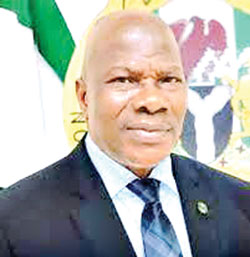
Micro-insurance benefits extend beyond providing financial protection for individuals and families, they promote financial inclusion by empowering people to take charge of their lives, writes JOSEPH INOKOTONG.
Microinsurance is a type of low-cost insurance designed for low-income individuals and families, especially in developing nations. This type of insurance offers a lower amount of coverage for a much smaller premium than traditional policies do. Typically, it provides coverage for things like health care, life insurance, and property insurance.

It has the potential of helping to grow a country’s economy by providing financial protection for those who would otherwise be excluded from the formal insurance market. This can lead to increased savings, investment, and consumption, which in turn can spur economic growth.
However, in Nigeria, the micro-insurance sector is still in its early stages, yet it is growing rapidly. There are several challenges facing the sector, including low awareness and a lack of adequate regulation. Interestingly, there is also a lot of growth potential, with a large and underserved population.
Experts are of the view that few things could be done to help the micro-insurance sector in Nigeria grow. First, in their opinion, there is a need to create a greater awareness of the products available and the benefits they offer. This could be done through education campaigns and working with local communities. Second, is the need to put more regulations in place to protect consumers and ensure the sector is operating fairly and transparently. Also, and of utmost importance is the need for more investment to develop the infrastructure and technology needed to support the sector.
In growing the sector, education and awareness should be the top priority. Without a good understanding of what micro-insurance is and how it can help, it will be difficult to get people to sign up for policies. It is also important to make sure that people understand the risks and benefits of micro-insurance so that they can make an informed decision about whether or not it is right for them.
In a clime like Nigeria where literacy is a big issue, it becomes imperative for the authourities to recognise that it is something that needs to be addressed. But an important point to reckon with is the fact that even people who cannot read can still benefit from education about micro-insurance. For example, there could be either radio or TV campaigns that explain the basics of micro-insurance simply and easily to understand. Better still, there could be community outreach programmes that use pictures or drawings to explain the concept.
In addition to education, regulation is important. Right now, different companies offer micro insurance in Nigeria, but not all of them may be operating fairly or transparently. Without proper regulation, people could be taken advantage of or even scammed.
One way to develop the sector is to create a centralised database of micro-insurance providers so that people can easily find information about the different companies and the products they offer. This database may also include customer reviews and ratings, so people can make an informed decision about which company to go with.
It could turn out a daunting task in trying to appraise efforts so far made to develop micro-insurance in the country. Nigeria has made some progress in developing micro-insurance. For example, the National Insurance Commission (NAICOM) has been working to create a regulatory framework for micro-insurance, and many private sector companies are offering micro-insurance products.
However, there are still a lot of challenges, such as low levels of financial literacy, lack of trust in the insurance industry, and high costs of distribution. Overall, it can be said that more need to be done to develop micro-insurance in Nigeria, but progress is being made.
The Commissioner for Insurance (CFI)/CE National Insurance Commission (NAICOM), Mr. Olorundare Sunday Thomas, recently spoke on the state of microinsurance business in Nigeria.
According to him, from available records, the performance of Micro-insurance is increasing including the supply side. “From the micro-insurance companies, what we have seen is an increase in patronage of low-income earners and other informal organisations to join the market.
“Recently, the key players who are main insurers are now also interested in micro-insurance as we have received applications for window operations from insurance companies, although there are no new products. There are a few challenges but the main challenge is networking as the infrastructure is not there due to the security situation to meet the rural areas so the investors will prefer to work in the urban areas.
“We are doing everything possible to make insurance available and we have licensed additional micro-insurance companies and products and we have seen a lot of improvements, especially in terms of numbers. We have a dedicated unit whose primary responsibility is to promote micro insurance and Takaful institutions”.
What could be done to up the game is to increase financial literacy so that people have a better understanding of how micro-insurance works and how it can benefit them. This could be done through public education, financial literacy classes and other initiatives.
Another is to find ways to make micro-insurance more affordable for low-income families. This could involve reducing distribution costs, simplifying products, or subsidising premiums.
It is pertinent to note that the key difference as it pertains to micro-insurance is that a subsidy for micro-insurance premiums would be targeted at a specific group of people – low-income families – who would otherwise not be able to afford insurance, whereas a subsidy for either fuel or food, for example, will benefit everyone regardless of the people’s income level. Worthy of note also, is the need to avoid creating a culture of dependence on subsidies, but there is a strong case to be made for micro insurance subsidies.
In the same vein, a potential drawback to subsidising micro-insurance premiums is that it could create a moral hazard, meaning that people might be less careful about taking care of their health or property if they know that their insurance premiums are being subsidised. This could lead to increased costs for the insurance company which would ultimately be passed on to the taxpayers. Another potential drawback is that it could create a “welfare trap”, where people become dependent on the subsidy and find it difficult to get out of poverty.
In making a decisive decision likely to affect the majority of the populace, it is important to consider the potential drawbacks of any policy, even if the benefits seem clear. For the development of the sector, micro-insurance subsidies are worth considering, despite these potential drawbacks.
It is important to remember that micro-insurance is not just about providing financial protection for individuals and families. It is also about promoting financial inclusion and empowering people to take control of their own lives. Finding a way to make micro-insurance more affordable, could have a huge impact on the citizens.







